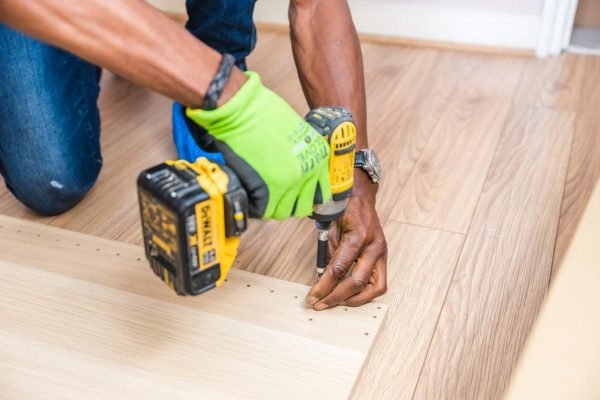PVC is the material most commonly used to create pipes, but what is it? PVC stands for polyvinyl chloride and it is the 3rd most used polymer in the country due to its versatility and ease of accessibility. It is a material that is very closely related to uPVC, another common polymer, which is used for different purposes. Typically, where PVC is used to make PVC pipes, uPVC is used for doors, conservatories, and windows.
The two materials also differ in how easy it is to paint them. With uPVC, professional painters can use uPVC spray paint to cover the material in primer and then in paint, and the process is relatively simple. With PVC, this is very much not the case! Regular buckets of paint and regular spray paint will not work on PVC surfaces. You have to use the right paint and make the surface of the PVC pipe properly primed first.
What paint will stick to the PVC pipe?
In order to get paint to stick to PVC pipe, you will need to use specifically formulated paint that is designed to work on plastics – like Krylon Supermaxx Spray Paint. This will usually come as spray paint and is the only paint that will adhere to the pipe. Luckily, spray paint gets a lot of coverage, so once you’ve found a good brand of exterior PVC paint, you won’t have to waste hours doing the work.
How do you make paint stick to PVC?
From what we have read, getting paint to stick to PVC pipe is no easy task, so we spoke to Revamp Spray and found that there are a few things you can do when you paint PVC to get it to work. It’s all about what you do before you start to paint PVC pipe that matters, otherwise, you’re just going to end up painting PVC again and again.
Before you begin to prepare your PVC pipe, make sure that you have the necessary safety gear on. Much of this process involves harmful particles and liquids that you want to avoid getting into your eyes, mouth and nose. You will need goggles, a ventilated mask and gloves to help protect yourself as you prime PVC pipe. Once you’ve got all of that, you should:
1. Sand the PVC pipe
Paint will stick better to a sanded than it will any usual PVC pipe, even if you’re using paint for plastic. Sanding the pipe first will also allow you to create a proper polished smooth PVC pipe by removing any blemishes and imperfections that would be exacerbated by you painting PVC.
You should use a high-grit sandpaper for this, around 220 or above. Place it in the palm of your hand and then rub it up and down the PVC pipe surface in order to remove the top layer of the PVC pipe.
2. Treat the PVC pipe surface with acetone
Once sanded, there is only one step between you and getting your spray paint out to paint PVC. This step can make or break your DIY project. By treating PVC pipe with acetone, you make it much easier for the paint to stick to PVC, its the same product often used to remove graffiti. PVC vinyl expands, and acetone makes the material swell, opening the pores within the PVC pipe and allowing it to better hold the paint for plastic. This means that as you paint PVC, your paint will stick and dry, allowing you to form a really smooth finish.
How long will the spray paint for plastic take to dry when painting PVC pipes?
When you use spray paint to paint PVC pipe, you need to make sure that you leave it to dry fully before putting it outside and exposing it to the elements. You will also need to use multiple coats of spray paint when painting PVC in order to get the depth of colour that you are after.
Between coats of spray paint, you will need to wait between 30 minutes and 1 hour. Essentially, when your spray paint on PVC is no longer tacky to the touch, you can continue on to your next layer of spray paint. Keep applying layers of spray paint until the PVC pipe is the colour you desire. Applying the paint in layers should help you to get the exact colour you want on your PVC pipe, as you can build up a depth of colour with your spray paint as you paint PVC.
Once you have painted PVC pipe, and all of your layers of plastic spray paint are dry, you should continue to leave your PVC pipes to dry for a while longer. Most spray paint would be relatively safe once the coats are dry, but to avoid damaging your new paint colour, it is often recommended that you wait for 7 days before exposing your painted PVC pipe to the world.
How to paint PVC pipe
- Prepare your PVC pipe by cutting the PVC into whatever shape you are after, and cleaning the surface of the PVC pipe with mild detergent and a clean rag or cloth. This will allow you to ensure you aren’t cementing anything detrimental to the material under your coats of paint.
- You will need to prime PVC by using sandpaper and acetone to treat your PVC pipe.
- Apply spray paint in long, smooth strokes. Using small strokes or irregular strokes when painting PVC pipe will damage the finish of the paint job.
- Once one coat of your spray paint is on the plastic surface, let the paint dry before continuing.
- Once dry, go back in with your plastic-specific paints for a second coat and continue on past your second coat, letting the paint dry after each until the colour matches your vision.








